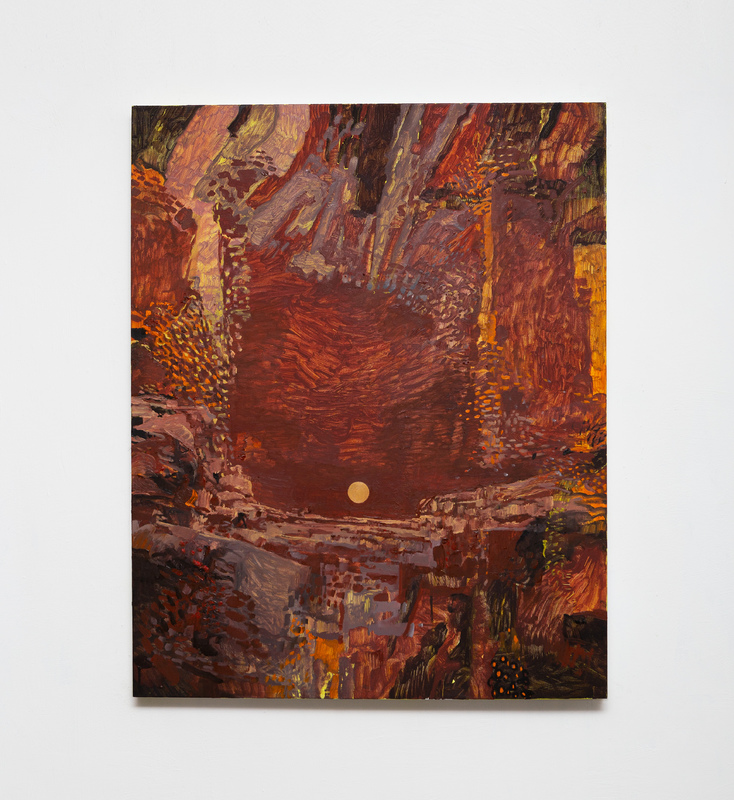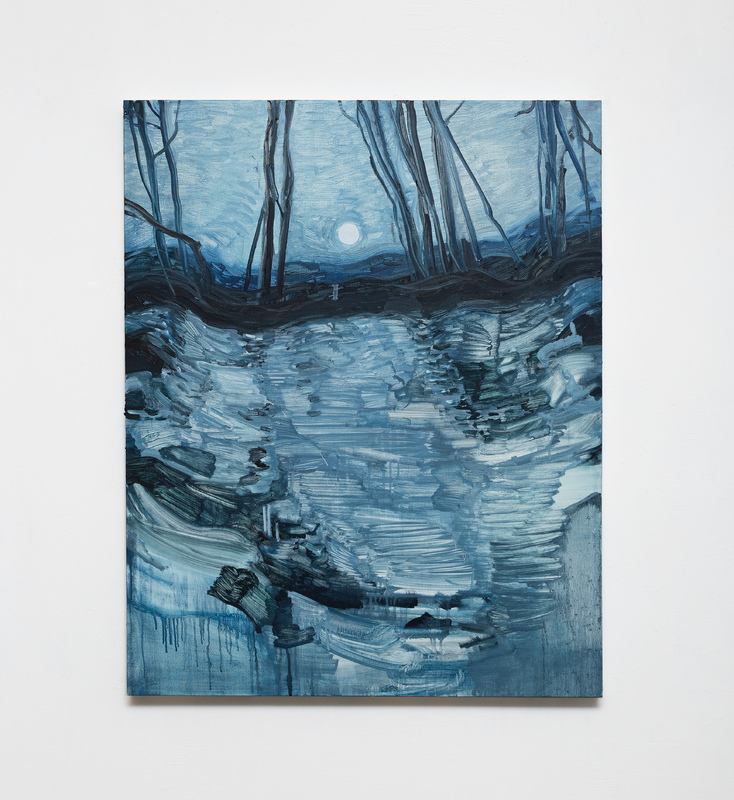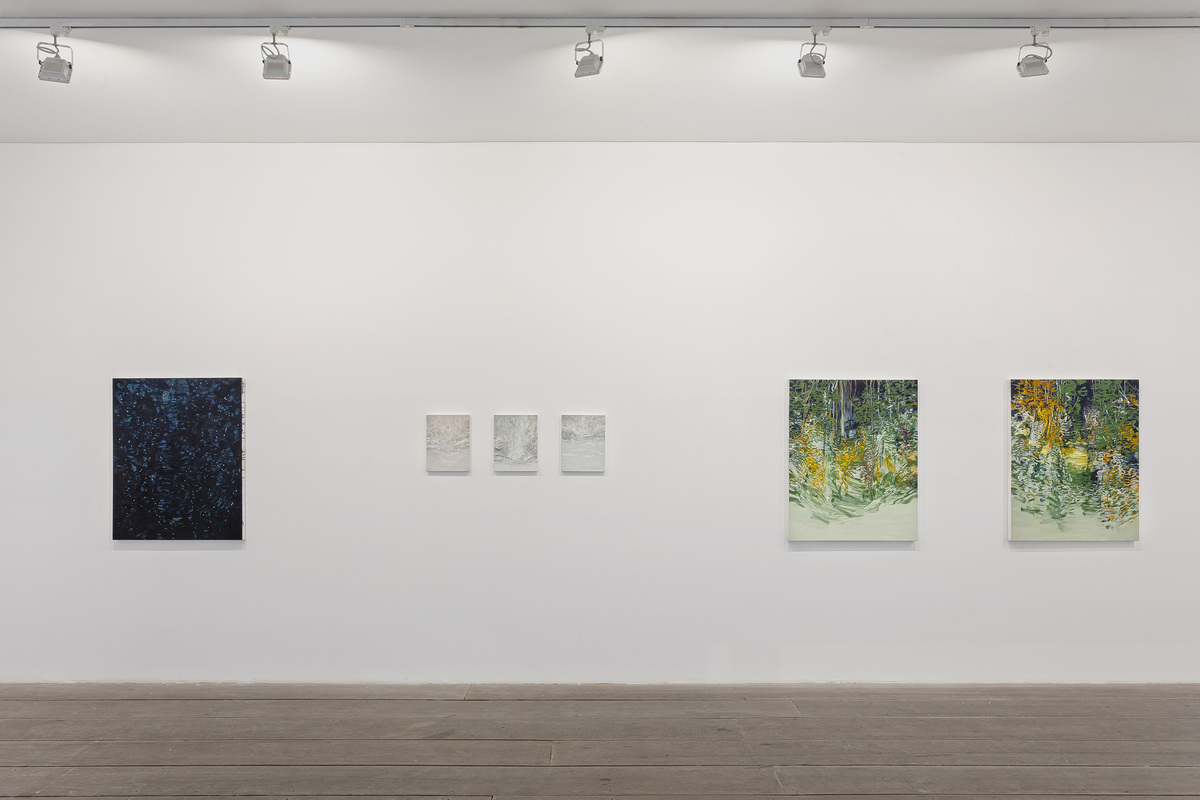Solo show at Galeria Marília Razuk - São Paulo, Brasil
Exhibiting period: May 27 to July 24, 2021
Text by Kiki Mazzucchelli
Photo credits: Artworks: Ana Pigosso - Exhibition: Filipe Berndt















Studio Short for Água-Viva
ÁGUA VIVA
By Kiki Mazzucchelli
Água-viva, (jellyfish) Alexandre Wagner’s first exhibition at Galeria Marília Razuk, brings together a set of paintings that, at first, can be perceived as contemporary developments of one of the most recognized genres within the pictorial tradition: the landscape. Even though it is possible to identify a theme in the scenes of dirt roads, skylines and woodlands presented here, this more immediate take would set the work within the key of a certain atavistic romanticism, which, as I see it, takes the focus out of other aspects that seem to be more determining factors in the work.
The way the paint is diluted and applied, the different applications and intensities found in one single pictorial field, the chromatic palette which plays with the contrasts between light and shadow; all of this attests to the importance given by the artist to the actual creation of the painting, putting in the background a bigger commitment to illusionism or representation. In other words, the landscape works as a sort of theme for paintings that, above all, deal with problems related to painting itself. Decidedly pictorial (malerisch), the pieces coalesce in images even if only for an instant. The next moment, the color stands out, the translucency, the different textures: the very matter of a painting.
This constant oscillation is one of the most striking characteristics of Wagner’s work; something that may only be possible due to the scale of this works, which never reaches heroic proportions, limiting themselves to the small and medium-sized format and invariably — and even counter-intuitively — vertical. The disintegration of the image, coupled with the treatment given to a pictorial space of modest dimensions, conveys an idea of fragility to these paintings, situating them outside an historic facet of painting associated with a virtuous and incisive masculinity that does not allow for hesitation or doubt. Even in the different rhythms created by the expressive stroke — which could appear as signs of assertiveness —, a certain delicacy prevails which, at certain moments, reminds us of the vaporous landscapes of Guignard.
A recurring figure in many paintings in this show is the circle, which sometimes appears as the sun, sometimes as a moon on the horizon in works such as Miragem (Mirage, 2019) and Cachalote (Cachalot, 2019); other times as mysterious orange lanterns on the tree trunks of an enlarged landscape in Lanternas (Lanterns, 2019); and, also, on other
occasions, as shiny dots placed slightly to the center of the composition, causing a complete destabilization of the pictorial space. Such is the case for Assa-peixe (Cabobanthus polysphaerus, 2019), a painting in tones of orange and green traversed from top to bottom by a section of color compressed by volumes that stretch towards the center from the top of the canvas. The resulting image could be understood as the aerial view of a dirt trail sided by hills, except for the inclusion of a green circle a little below the center of painting (sun/moon), almost forcing us to notice what we see as the horizon, even if it is the horizon of an indefinite landscape.
This vertigo effect of “losing ground” also happens in paintings such as Cambará (2019), which could be the view from above to the center of a crater, a horizon, the reflection of a sun in a lagoon seen from above this same crater. Beyond any type of representation, the circle seems to function in these works as some kind of device that serves to anchor the compositions, in so much as it creates a focal point amidst the layers of watery strokes that suggest a matter in flow, in a movement towards the exterior of the painting. That is, these circles end up creating some kind of center in the midst of a movement of erosion of the image predominant in these paintings.
Much like jellyfish, the set of works presented in this exhibition seems to possess a changing morphology; they are paintings in which the landscape formulates the abyss of space and the abyss of image. They pull away, thus, from a long lineage of Western landscape paintings that distinguishes nature from culture, the latter trying to domesticate or placate the former. Alexandre Wagner’s work, on the contrary, seems to want to incorporate the living and in constant mutation of natural organisms, rejecting narrative in favor of the reality of the painting matter, at the same time without resorting to the spiritual or traditional justifications traditionally associated with the origins of the Western abstract painting. Much like jellyfish, these are invertebrate paintings.